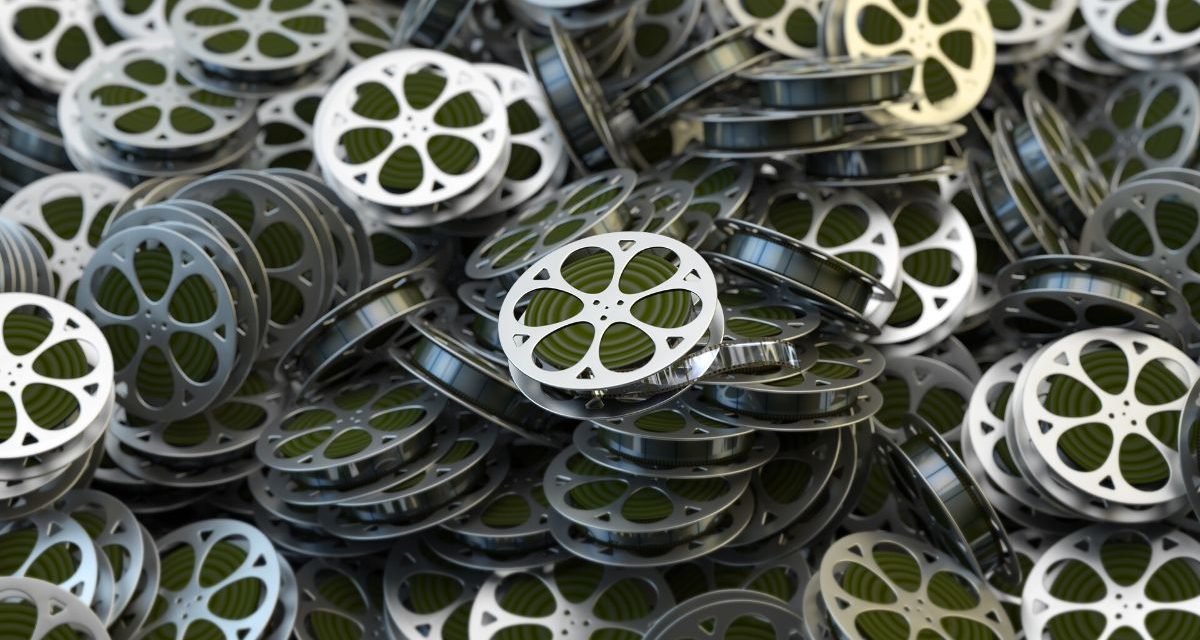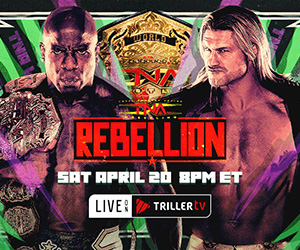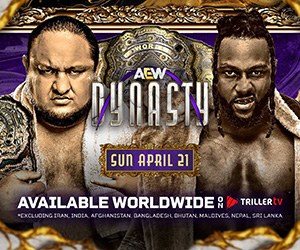The new documentary Surviving The Dungeon: The Legacy of Stu Hart explores the life of one of Calgary’s favourite sons, by way of interviews with the patriarch of the Hart wrestling family, Stu Hart himself, his wife Helen, and several of the children for whom he gave so much.
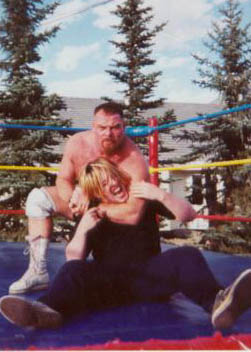
Jim Neidhart teaches Blake Norton a lesson outside the Hart House in Calgary on his first day of training. Photos courtesy Blake Norton.
The DVD makes clear that Hart was a lot more than just a relentless trainer of many of the great wrestlers of several generations. A wise, caring man, athletically he was also a lot more than most modern fans may be able to imagine of him, having seen him old and hunched in documentaries such as Wrestling With Shadows. Before ever turning to wrestling, Hart was a CFL player in the 1930s, a Canadian Navy enlistee, and an amateur wrestler who looked capable of going to the Olympics, before World War II cancelled the 1944 games scheduled for London, England.
Attempting to explain the man’s raison d’être, if you will, filmmaker Blake Norton — who has performed many roles within the UK wrestling business in particular — found himself in a position to see both sides of Stu Hart, which meant Dungeon “stretching” that he contrastingly found to be horrific yet satisfying.
“To be stretched by Stu was great in the end,” laughed Norton when speaking to SLAM! Wrestling. “It helped me understand the industry that he was brought into, where he was trained by having the crap beaten out of him. There was a degree there of him sharing with me, and I think he felt that too. He was telling me his story in this different way, and he never injured me in doing it. You know, some of Stu’s final sessions in teaching those holds are with me on that DVD. It was kind of a bonding thing, and it helped me to see him in all his glory. It was like walking into a time warp, walking into that Dungeon with him; you could just see all the years roll back as he applied those holds. Those things were what he lived for.”
As much as the memory of the pain Norton endured during those sessions is imprinted in his mind, much more so is the manner in which he met Stu and wife Helen Hart for the first time. Working as a journalist for IGN.com, Norton was assigned to travel to Calgary to take some video footage for that entertainment website in 1999, and having contacted Bruce Hart, was told by the second-eldest child of Stu and Helen that he and his wife-to-be would be welcome to stay at the Hart family home. Bruce, however, had neglected to tell his Mom and Dad.
“I remember when we got to the Hart house, I just knocked on the back door,” recalled Norton. “One of Smith’s daughters came out, and when I explained what I was there for, she called for ‘Grandpappy’, and when I looked up I saw the unmistakable figure of Stu over the stove. He looked around at us, hesitated for a moment, and the first thing he said was (impersonates Hart) ‘Eh, do you want a burger?’ (laughs). A couple of minutes later, Helen came into the room in her pajamas and she immediately began apologizing to me about the mess of the house, and the fact that she wasn’t wearing any make-up.
“So we were talking for about half-an-hour when Helen asks where we’re staying, at which point I realize that Bruce hasn’t told Stu or Helen that he’d told us we could stay there. So there they had been, apologizing to us for not being better hosts, and yet they had no idea that we’d come to stay with them, and to them, we were just two random passers-by. These were just two of the most amazing people you could meet. I was never able to offer them anything in terms of money, because I knew how offended they’d be, and it got to the point where my wife and I started eating at Denny’s because it didn’t seem right to be eating at the house all of the time without being able to give something back to them.”
What was supposed to be just a few videos soon turned into a personal project of education, with Norton visiting the Harts on three separate occasions before making his own debut as a professional wrestler in 2001. In that time he recorded dozens of hours of footage, which were never really intended for commercial release, which is one of the reasons why the project has been so long in seeing the light of day.
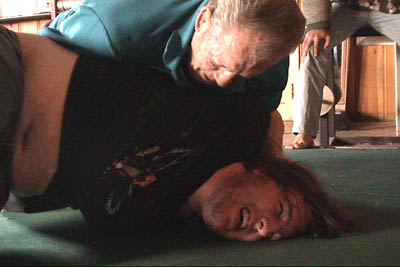
Stu Hart and Blake Norton grapple in the Dungeon.
“I had borrowed a Mini-DV camera from someone at IGN.com, and since I was there with this incredible family, I just decided to go crazy and do all of these interviews. I’d watched the tapes back many times on VHS copies that I’d made, but I didn’t have access to a studio or an editor to do anything with the original recordings, so literally nothing happened between the end of 2000 and the start of 2005.
“In any case, I’d never really thought of this as a commercial product, and to be honest if this makes back the expenditure that went into making it, I’ll be shocked (laughs). And that wasn’t the point anyway. So I didn’t start editing things until the start of 2005, when my father-in-law gave me one of his old computers, and I decided to take six months out to sit down and capture all the tapes. I learned to edit what I had because this wasn’t a commercial project, and because it had that home-movie feel.
“Editing the thing has been the worst (laughs),” Norton said of that less-enjoyable process. “There have been several times when I’ve went back and said, ‘This part of the film needs something extra’. I had put the structure of the piece together years earlier, and that never changed, but the pieces did. I mean, if you saw the first edit — which was the first thing that I ever edited — you’d see a lot of changes.”
Once it was decided that these “home movies” could make for a portrait of Stu and his family, there were also the many hurdles of distributing the DVD. Negotiations with several companies often took six months at a time, only to end with no further progress. Then, there were further issues with World Wrestling Entertainment, who initially expressed an interest in the footage, only to play hard-ball at the very last moment.
“I approached WWE to see if they’d be interested in what I was doing in any way, but it took them forever to get back to me. Their distribution was so vast that I didn’t want to get into anything without talking to them first, because it would’ve been the best thing for the film. But they wanted the ability to edit the film, and that was the one thing that I wouldn’t do, because their interests and my interests would be substantially different, and because this was such a personal project to me, I didn’t want to just hand them over the tapes and let them do as they pleased.
“So there’s actually an entire chapter of the film from May 2001 that isn’t in there any more. It’s from the Calgary Saddledome, when my wife and I, Stu, Smith Hart, Ellie, Diana and several others were in the front row for Raw, with the family being acknowledged in a celebration with Chris Jericho and Chris Benoit. I’d negotiated with WWE to use that footage, and then they asked me for an amount of money which I just couldn’t even fathom, so basically I submitted this chapter to them that I’d been working for six months on, only to have them do that.
“There was even a third issue that I had with WWE, when they told me that I couldn’t use use any Stampede Wrestling footage, since they owned it. But the thing was that Ross Hart had given me permission to use the footage before WWE bought it from family, but even so, that turned into a several-month deal.”
Considering the content rather than the circumstances of the film, then, one of the things immediately striking in the film is Hart’s speed of thought, along with his sense of humour. For those who weren’t aware of this side of the man, the latter in particular is a stark contrast to the feared guardian of the Dungeon, but that’s a focus that Norton ensured was a large part of the film.
At one point, Hart quips, “Pick a few flowers and enjoy the things in life. It’s a wonderful place to be.” There are other examples of his wit as well, said Norton.
“There’s one extra on the DVD with Stu telling the story about the tiger and the water buffalo, which was to do with something he saw on television. I put it on there because I felt the clip really humanized him. But similarly, I remember calling him up in 2003, because I was wanting to build a wrestling ring here in Ireland, and I wanted to know how I should go about that. I remember about 90 minutes into the conversation he paused for a second and said, ‘You know, with how much this phone call is costing you, why don’t I just send you a ring?’ (laughs). The thing that people didn’t get about Stu, which kinda bothered me, was that people had the impression of him as being really out-of-touch. The truth is that his hearing was horrible, and at the end when he had his bad days maybe he wasn’t so approachable, but he was as sharp as a tack. He knew what was going on, and he was really on top of things.”
Inextricably linked with Stu, of course, is the methodology of the Dungeon, which is seen in various forms throughout the film. There are several eye-catching scenes of Bruce Hart training young wrestlers, including an incredible exhibition between mid-teens Harry Smith and T.J. Wilson (Tyson Kidd). Watching the documentary, it becomes obvious that Bruce Hart, when motivated to do so, could be an excellent trainer of young wrestlers, perhaps even maintaining some of the performance principles he learned from his father. Norton agrees that Bruce is an excellent coach, but often seemed preoccupied with other priorities.
“When it comes to between the ropes, Bruce is a mathematician — he’s really a master of how to execute each hold. I saw Hulk Hogan’s Celebrity Wrestling and watched Brian Knobbs tell people how to fall over the top rope, and the thing with Bruce was that he would tell you where you should have every body part placed at every point in that move’s execution. Then, he’d be able to explain why you would execute that hold, and where you should go from there. There was no grey area with him, as he’d traveled all over the world, seen all these different types of wrestling, and knew the right ways to do things.
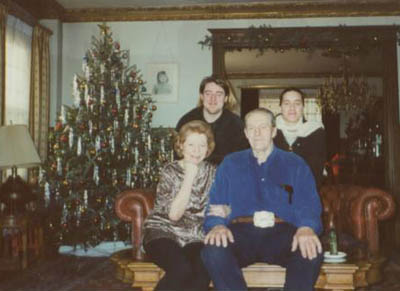
Blake Norton and his girlfriend with Stu and Helen Hart.
“But I think with Bruce, it’s the case that he didn’t really know what he wanted to do in wrestling. I know he had wanted to keep Stampede open in its later years, but when I worked with him I sensed that he was frustrated by wrestlers who were young and too inexperienced. But the reality of the independent wrestling scene was that it was dying, and there was no-one who was going to go to Stampede Wrestling during the height of the Monday Night Wars. And you know, Bruce would show up literally hours late for training sessions (laughs). When I was training, I’d show up at 12, I’d go and have tea with Helen, and I’d do some practicing on my own, and then Bruce would probably show up about an hour-and-a-half or two hours later, meander into the house and start talking to somebody else. The apple doesn’t fall far from the tree, and I don’t think he had the discipline to give good habits to guys in that way. But anyone who has trained under Bruce got great training — there’s no two ways about that.
“As for Harry and TJ themselves, even then both had execution that was beyond their years; Harry must have been 14 years at the time, maybe 15, with TJ just a year or so older. The guys who were there watching that match, and who got training from Bruce, their execution of wrestling moves is going to be better than most wrestlers in the WWE today. I don’t want to name any names, but if you turn on any WWE show, you are going to see several guys who are really quite green, and don’t quite have the knack of what they should be doing, and where they should be in the ring. But if you look at that match and see Harry and TJ as teenagers and look at their positioning and execution, you’ll see it’s so sharp, and they are so in control, which is why when you watch both today, they’re at a level above everyone else. Back then, all the trainees loved working with them, and it was like hanging out as friends. They would never hurt you and nothing would ever go wrong. It was like they were 20-year veterans.”
Speaking of 20-year careers, Norton isn’t quite sure if the most famous of the Hart brothers, Bret (whose career was actually closer to 24 years) has seen the documentary at this time. He’s hopeful, however, that he’ll take it in the manner in which it was intended, which was to show the world what a great man his father was. Anyone, in fact, who is interested in the career of the patriarch or the family themselves, is encouraged to make the effort to view the DVD.
“In so many ways, the time that I spent with Stu and the family was the best time of my life,” ended Norton. “And as you can tell, I’ve spent so much of the last nine years of my life making this film. So to have people who I respect say that they enjoyed it, and to have the family say that it’s lovingly done, it was really worth it to me.
“So I would say that if you care about wrestling history, the history of this family, or the history of this man, check out the documentary, because I think it is something special, and it’s such a community effort. All of the people who worked on this have given their time for free; my wife, Bob Leonard with his photos, Ross Hart who has been a saint throughout this. It’s all because we had contact in some way with Stu, and we think so much of him.
“I remember when Stu was in the hospital in 2001, and my wife and I gave him a scrapbook of emails of get-well messages, and he said, ‘You’ve made me a superstar.’ He didn’t realize how important he was to the wrestling community. He was a great man who would do anything for you. I’m just glad to be able to be a conduit to let people know about Stu Hart. I hope I’ve done his name justice.”
